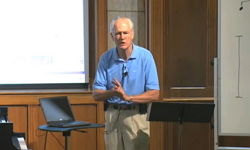The purpose of this paper is to examine how Chinese speakers realize Korean prosodic phrases in the reading of Korean texts. Prosodic phrase, in this study, is defined as basic unit of spoken language which can be perceived as purely separate phonetic...
http://chineseinput.net/에서 pinyin(병음)방식으로 중국어를 변환할 수 있습니다.
변환된 중국어를 복사하여 사용하시면 됩니다.
- 中文 을 입력하시려면 zhongwen을 입력하시고 space를누르시면됩니다.
- 北京 을 입력하시려면 beijing을 입력하시고 space를 누르시면 됩니다.
낭독체에 나타난 중국인 학습자들의 운율구 실현 양상 = Aspects of Prosodic Phrases’ Formation Produced by Chinese Speakers in the Reading of Korean Text
한글로보기https://www.riss.kr/link?id=A76338639
- 저자
- 발행기관
- 학술지명
- 권호사항
-
발행연도
2008
-
작성언어
Korean
- 주제어
-
자료형태
학술저널
- 발행기관 URL
-
수록면
29-41(13쪽)
- 제공처
-
0
상세조회 -
0
다운로드
부가정보
다국어 초록 (Multilingual Abstract)
The purpose of this paper is to examine how Chinese speakers realize Korean prosodic phrases in the reading of Korean texts. Prosodic phrase, in this study, is defined as basic unit of spoken language which can be perceived as purely separate phonetic unit by both hearer and speaker, and is realized with a coherent intonational configuration. Prosodic phrase plays an important role in both speech production and perception. In the second language acquisition, prosody influences the accuracy and fluency of spoken language. The main purpose of this study is to describe the aspect of syntagmatic operation of prosody that produces prosodic phrases. We have specifically examined the relations between the prosodic phrase's boundary and its syntactic status. Furthermore, we examined internal syntactic structure of each prosodic phrase. And the results of each analysis were compared to the aspects of prosodic phrases' formation produced by native Korean speakers. The results show that Chinese speakers tend to coincide the prosodic phrases with syntactic structure more than native Korean speakers.
목차 (Table of Contents)
- ABSTRACT
- 1. 서론
- 2. 한국어의 운율구조
- 3. 연구 방법
- 4. 결과 및 토의
- ABSTRACT
- 1. 서론
- 2. 한국어의 운율구조
- 3. 연구 방법
- 4. 결과 및 토의
- 5. 결론
- 참고문헌
- 부록
동일학술지(권/호) 다른 논문
-
Speaker-specific Implementation of VOT Values in Korean
- 한국음성학회
- Jeong-Im Han
- 2008
-
한국인남성과 미국인남성이 발음한 영어 긴장ㆍ이완모음의 음향적 비교
- 한국음성학회
- 양병곤(Byunggon Yang)
- 2008
-
Gradient Reduction of C₁ in /pk/ Sequences
- 한국음성학회
- Minjung Son
- 2008
-
한국어 음성인식 시스템 향상을 위한 동음이철 단위의 중의성 유형 분류
- 한국음성학회
- 윤애선(Aesun Yoon)
- 2008




 ScienceON
ScienceON DBpia
DBpia





